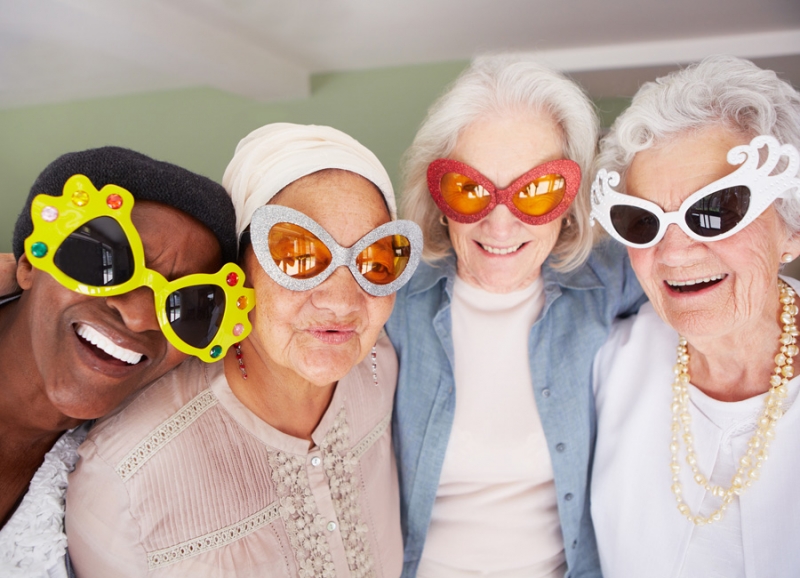Today’s older adult is often on the move, and summer is prime time for outdoor activities under the sun. Whether you’re beaching, biking, hiking, gardening, or just relaxing, you’ll want to take extra precautions to protect your eyes from sun exposure. That means investing a little time in choosing quality eyewear designed to counter the sun’s UV rays as well as nourishing and exercising the eyes.
Three Ways to Protect the Eyes
- Proper Summer Eyewear
- Nutrients to Support Eye Health
- Yoga for the Eyes
Proper Summer Eyewear for Active Older Adults
UV-protective eyewear is essential year-round for everyone, particularly in the summer months when we spend more time near bodies of water and other reflective surfaces. Summer days are longer and sun exposure increases as we spend more time outdoors. UV light waves are the damage-causing rays emitted by the sun—too much exposure to UV waves can cause serious problems for the eyes: sun damage, sunburn, cataracts, macular degeneration, and even eye cancer or blindness. If you have any health conditions of the eye, or take certain medications, your eyes may be at higher risk for sun damage.
Sunglasses for Older Adults should offer 100% UV protection. Your sunglasses should feel comfortable and, depending on your health history may need to “wrap around” your peripheral vision. You may also want to opt for polarized lenses if you spend a lot of time on the water. Always check with your eyecare health provider about the best eyewear for you.
Hats Off to Sun Protection! Hats with a rim or visor are ideal to filter out rays that your eyewear doesn’t cover.
Don’t Leave Home Without Them. Older adults should wear their sunglasses on overcast, bright days as well as sunny and clear days. Whether your out for a leisurely stroll, gardening or spending time at the beach—don’t leave home without your sunglasses!
Nutrients to Support Eye Health
Vitamin A. The most important vitamin for healthy eyes and good vision is Vitamin A. Carrots, are well-known for providing Vitamin A, but the nutrient in carrots is beta carotene, which is different from Vitamin A. The body has to convert carotenoids to retinols before it can actively use them. Also, some folks have trouble digesting raw carrots or may not like them. So, you want to be sure to include a variety of foods that are rich in bioavailable Vitamin A—a form most easily assimilated by the body—including foods such as cod liver oil, king mackerel, salmon, sweet potato, winter squash, turnip greens, sweet red pepper, spinach, mango, and cantaloupe
Antioxidants. The foods richest in antioxidants (vitamins A, C and E) tend to be berries (along with other fruits and vegetables in general). These nutrients support the health of the eyes by way of supporting immunity and helping the body to clear-out cellular debris that results from stress, illness, and exposure to toxins
Yoga for the Eyes
The eyes are supported by bands of muscles (the extraocular muscles) that control their movement. Exercising those muscles can improve circulation to the eyes, which helps reduce inflammation and minimize eye fatigue. Strong eye muscles also protect against the negative effects of vision overuse patterns such as digital eye strain or frequent night driving.
Below is one of several eye exercises that nourish and strengthen the musclesand other structures of the eyes.
Figure 8 Eye Exercise
You may have practiced this exercise, sometimes called “yoga for the eyes,” if you’ve ever taken a yoga class. This exercise should be done from a seated position, such as at your desk, while relaxing in your favorite chair, or while in an easy, seated yoga pose.
- Pick a point on the floor about 10 feet in front of you and focus on it.
- Trace an imaginary figure eight with your eyes.
- Keep tracing for 30 seconds, then switch directions.
Remember, keeping the eye muscles strong, flexible, and nourished is essential to protecting eye health as you age.
If you are concerned about changes in your vision, or experiencing any of the symptoms listed, it may be time to adopt healthier habits, make changes in your vision care plan, or consult with an ophthalmologist. The health and wellness team at each of the Everbrook Senior Living communities are here to support and guide you.




